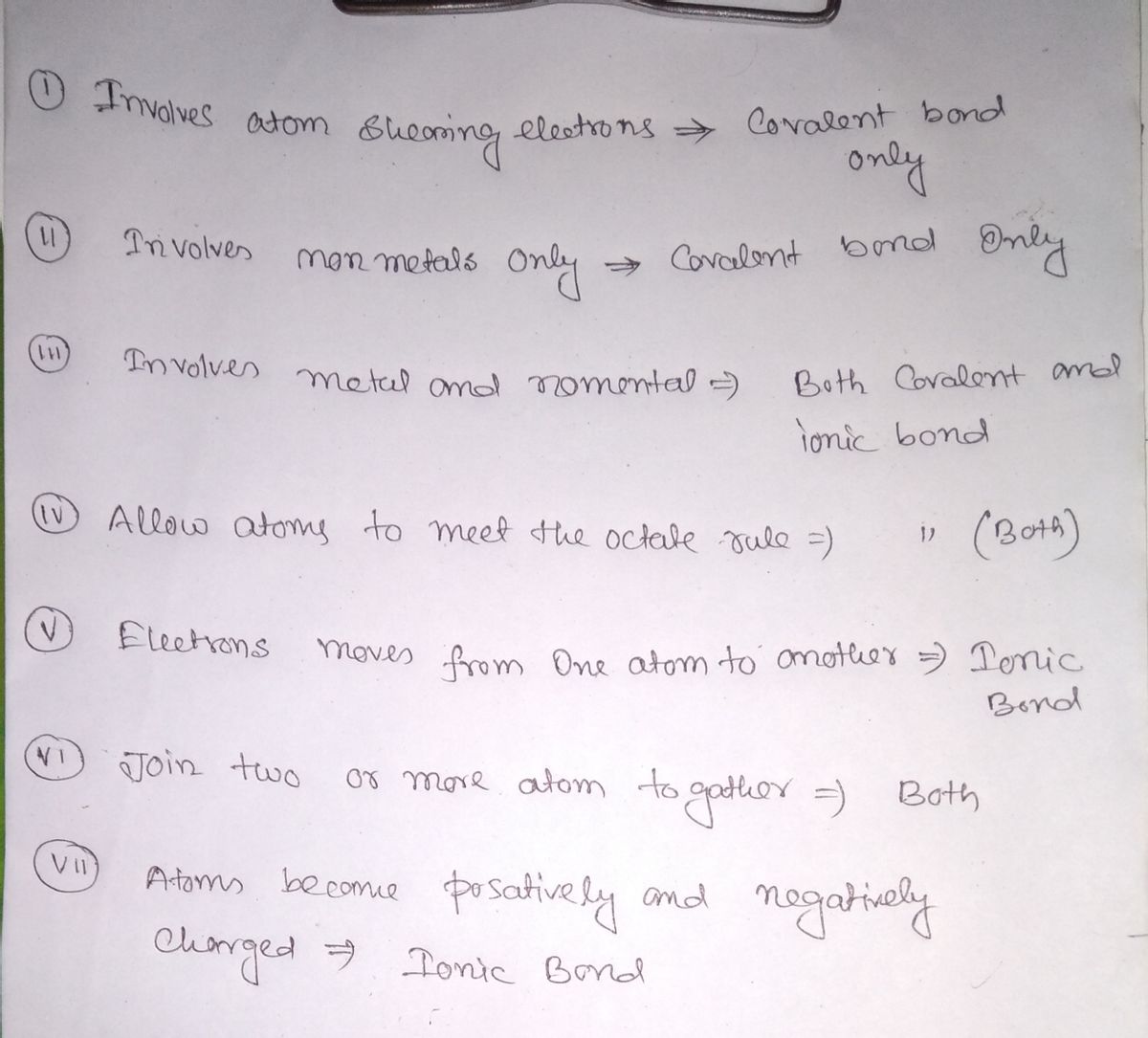They are similar to covalent in that electrons are shared in the electron se They are similar to ionic in that the metal atoms gain electrons They are similar to ionic in that the metal atoms lose electrons The electron sea gives metals the property of being bendable
They are similar to covalent in that electrons are shared in the electron se They are similar to ionic in that the metal atoms gain electrons They are similar to ionic in that the metal atoms lose electrons The electron sea gives metals the property of being bendable
Chemistry
10th Edition
ISBN:9781305957404
Author:Steven S. Zumdahl, Susan A. Zumdahl, Donald J. DeCoste
Publisher:Steven S. Zumdahl, Susan A. Zumdahl, Donald J. DeCoste
Chapter1: Chemical Foundations
Section: Chapter Questions
Problem 1RQ: Define and explain the differences between the following terms. a. law and theory b. theory and...
Related questions
Question
1. Match the type of bond to the description
2. Which of the following statements are true of metallic bonds?

Transcribed Image Text:Which of the following statements are true of metallic bonds?
O They are similar to covalent in that electrons are shared in the electron sea
They are similar to ionic in that the metal atoms gain electrons
O They are similar to ionic in that the metal atoms lose electrons
The electron sea gives metals the property of being bendable
O The electron sea causes metals to be very poor conductors of electricity

Transcribed Image Text:Match the type of bond to the description
Involves atoms sharing electrons
Involves nonmetals only
Involves a metal and a nonmetal
Allows atoms to meet the octet rule
Electrons move from one atom to another
Joins two or more atoms together
Atoms become positively or negatively charged
:: Covalent Bond Only
I II II
::lonic Bond Only
:: Both Covalent & lonic
Expert Solution
Step 1

Step by step
Solved in 2 steps with 2 images

Knowledge Booster
Learn more about
Need a deep-dive on the concept behind this application? Look no further. Learn more about this topic, chemistry and related others by exploring similar questions and additional content below.Recommended textbooks for you

Chemistry
Chemistry
ISBN:
9781305957404
Author:
Steven S. Zumdahl, Susan A. Zumdahl, Donald J. DeCoste
Publisher:
Cengage Learning

Chemistry
Chemistry
ISBN:
9781259911156
Author:
Raymond Chang Dr., Jason Overby Professor
Publisher:
McGraw-Hill Education

Principles of Instrumental Analysis
Chemistry
ISBN:
9781305577213
Author:
Douglas A. Skoog, F. James Holler, Stanley R. Crouch
Publisher:
Cengage Learning

Chemistry
Chemistry
ISBN:
9781305957404
Author:
Steven S. Zumdahl, Susan A. Zumdahl, Donald J. DeCoste
Publisher:
Cengage Learning

Chemistry
Chemistry
ISBN:
9781259911156
Author:
Raymond Chang Dr., Jason Overby Professor
Publisher:
McGraw-Hill Education

Principles of Instrumental Analysis
Chemistry
ISBN:
9781305577213
Author:
Douglas A. Skoog, F. James Holler, Stanley R. Crouch
Publisher:
Cengage Learning

Organic Chemistry
Chemistry
ISBN:
9780078021558
Author:
Janice Gorzynski Smith Dr.
Publisher:
McGraw-Hill Education

Chemistry: Principles and Reactions
Chemistry
ISBN:
9781305079373
Author:
William L. Masterton, Cecile N. Hurley
Publisher:
Cengage Learning

Elementary Principles of Chemical Processes, Bind…
Chemistry
ISBN:
9781118431221
Author:
Richard M. Felder, Ronald W. Rousseau, Lisa G. Bullard
Publisher:
WILEY